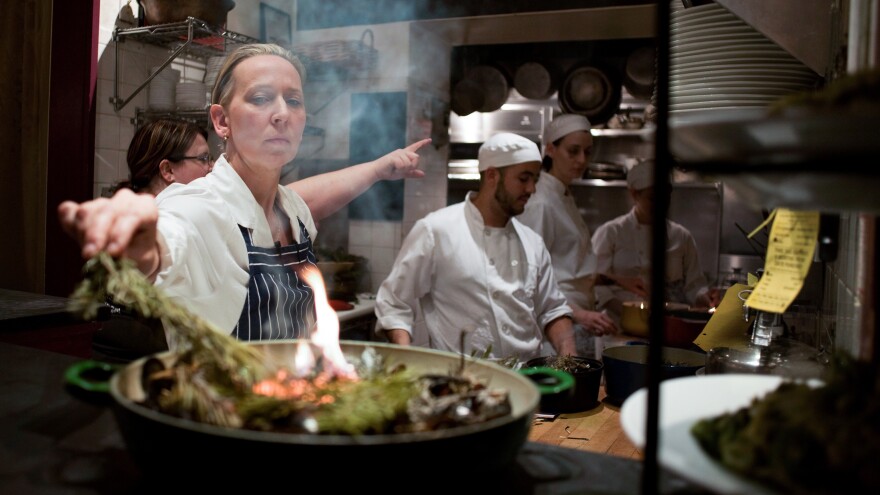If you still have your Christmas tree up in your living room because you just can't bear the thought of throwing out all that fine pine scent, then you may be an evergreen addict. If you still have it up because you're too lazy to take off the ornaments, then you may be a hoarder, but that's another post.
Fear not, conifer connoisseurs. You don't have to wait for the holidays to surround yourself with spruce. American chefs from coast to coast are using evergreens to develop unique flavors in dishes, from white fir and sorrel broth to pine needle vinegar to smoked mussels.
As we told you last year, using spruce shoots in beverages is newly hip, yet centuries old. The practice has been around since the ancient Scandinavians first surveyed their vast forests, looking for something to ferment into alcohol. And 18th century English sailors were practically required to drink spruce beer in an effort to prevent scurvy. It didn't really work, but they enjoyed drinking it anyway.
The smell of burning pine needles evokes such nostalgia for chef Gabrielle Hamilton of New York City that she recently wrote a piece in Saveur magazine about a childhood dish of smoked mussels that developed as cousins spent the afternoon hunting for dry pine needles on a French forest floor. She reminisced:
"There is a riveting and quick explosive roar of fire as you set match to the dry pine needles now scattered over those mussels, which have been neatly and tightly packed together between two large nails at either end of the wet plank, so tightly set in, with their hinges up, not down, that even when boiling inside in their own liquor, they can't open and lose their juices because they have been arranged just so. And it ends, perfectly, with you and your friends and family, in the chalky blue air of sunset, brushing away the pine ashes, and pulling out the smoky, juicy mussels and sucking them right from the shells, your sooty hands gripping a cool glass of white burgundy from, ideally, just a few villages away in the winier parts of the Languedoc."
For CJ Jacobson, executive chef of in Los Angeles, the evergreens-as-food trend is an extension of his personal efforts to get out and hike more, and his professional efforts to incorporate local plants and products into his dishes. He seeks out not only the plants that are grown in the state, thanks to all the water being piped in, but the ones that have always been native.
"California's great. We've got the farmers markets. But it's not just giant heirloom tomatoes ... there's got to be more of a terroir here," he tells The Salt.

Jacobson became smitten with evergreens specifically after he did a training stint at , the Copenhagen restaurant famous for turning foraged food into high art.
"They use pine in a lot of different capacities. They use it like any other herb," he says.
The tender needle shoots and tips of the white fir "taste like tangerine," Jacobson says, and he uses them to brighten a stock with wild sorrel, goat cheese whey and lemon juice to be ladled over hamachi.
Jacobson also incorporates white fir and pine needles into butter, which he mashes into simple baked potatoes.
John Critchley, executive chef at Washington, D.C.'s , considers using pine needles a return to his roots. A native New Englander, he says it is still a common practice there to incorporate the forest on the plate.
"If you're a fan of mushrooms, the taste is very similar," he says. "It doesn't taste like you're eating sap or anything – it just gives you the aroma of the woods."
He covers glass jars of the shoots with cider or brown rice vinegar in early spring, allows them to sit all summer, then uses the vinegar to brighten his fall and winter dishes. He's currently using pine and spruce vinegar in a sauce with hedgehog mushrooms, which he adds to a seared tuna and black truffle ravioli dish.
If you want to try this at home, the recipe is super simple. Here it is, courtesy of Critchley.
Pine Or Spruce Vinegar
About 1/2 lb. pine or spruce shoots
1 gallon mason jar
Enough brown rice vinegar to cover
Cover the shoots with brown rice vinegar, cap, and let sit for one month.
When ready to use, strain the liquid through a cheesecloth and discard the shoots.
Copyright 2020 NPR. To see more, visit https://www.npr.org.



